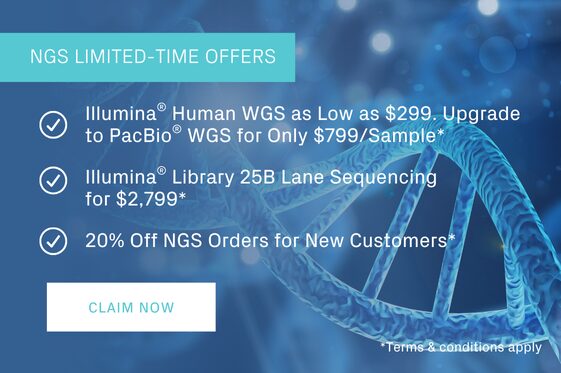RNA Sequencing (RNA-Seq)
GENEWIZ RNA-Seq services provide unparalleled long- and short-read flexibility in analyzing different RNA species, including coding, non-coding, and small transcripts. Sample starting material and types include ultra-low input, high-throughput, and bulk RNA seq service with data delivery options as fast as 1 week.
GENEWIZ transcriptomics services include small, single-cell, spatial, and Iso-Seq. Our Leipzig and Oxford-based processing and support provides the fastest and most reliable service for customers in North America and our bioinformatics remains unmatched.
For RNA-Seq experiments using FFPE tissue or other low-quality samples, submit an inquiry about our highly-sensitive RNA exome solution.
RNA Sequencing Services
-
Single-Cell RNA-Seq
Single-cell RNA sequencing analyzes gene expression at single-cell resolution for heterogeneous samples. The 10x Genomics® Chromium™ platform provides advanced transcriptional profiling of thousands of individual cells.
-
Ultra-Low Input Bulk RNA-Seq
Ultra-low input RNA sequencing provides bulk expression analysis of samples containing as few as 10 pg of RNA or just a few cells. Recommended for sequencing cells after FACS or immunoprecipitation (RIP-Seq).
-
Long-Read Isoform Sequencing
Iso-Seq reads full-length contiguous transcripts. Applications include genome annotation, gene fusion detection, novel transcript discovery, and alternative splicing analysis.
-
Standard Bulk RNA-Seq
Standard RNA sequencing is our most popular option for profiling gene expression, enabling the analysis of coding (mRNA) and long non-coding RNA (lncRNA).
-
Strand-Specific Bulk RNA-Seq
Strand-specific RNA sequencing provides gene expression information with relation to strand orientation. Used for genome annotation, analysis of anti-sense/overlapping transcripts, and novel transcript discovery.
-
Small RNA-Seq
Small RNA sequencing enables analysis of miRNA and other small RNA species. Provides small RNA discovery and profiling.
-
CLIA RNA-Seq
RNA-Seq services performed in a CAP/CLIA laboratory for clinical applications. Custom CLIA validations for specific assays.
-
Unsure of the best RNA-Seq solution for your project?
Use our step-by-step guide
A Guide to RNA Sequencing
An in-depth guide for achieving success in your RNA-Seq experiments
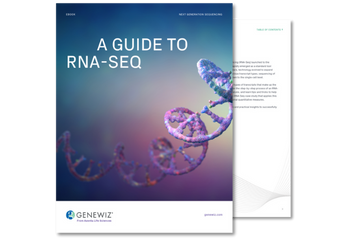
Features & Benefits
-
Superior Data Quality
Exceeding manufacturer’s benchmarks
-
Fast Turnaround
Starting at 1 week for sequencing
-
US-Based Processing
Sequencing and customer support in New Jersey
-
RNA extraction from hundreds of sample types to accommodate your starting material
-
Highly accurate sequencing the first time with UMI and ERCC control add-ons
-
Complete solutions with downstream RNA-Seq data analysis, including customizable options
-
Dedicated Ph.D.-level support at every step with real-time project updates through our online ordering system
-
Automated workflows to increase scalability and improve reproducibility
-
CLIA RNA sequencing available for clinical research (inquire for more information)
RNA Extraction & Library Preparation
Having performed over 220,000 sample extractions, our experienced scientists can extract RNA from over 30 standard and hundreds of custom sample types to ensure RNA integrity and quality.
We also offer several library preparation protocols tailored to meet your project requirements. In addition to standard and stranded poly(A) selection methods, we offer rRNA depletion for FFPE, poor-quality, and ultra-low input samples containing as few as 10 pg of RNA or just a few cells. We also offer optional controls such as unique molecular identifiers (UMIs) and ERCC (External RNA Controls Consortium) RNA spike-ins to improve RNA-Seq data quality and quantification accuracy.

Transcriptomics Technical Resources
-
Technical Specifications
-
Example Data
-
Sample Submission Guidelines
-
Frequently Asked Questions
-
Data Quality
-
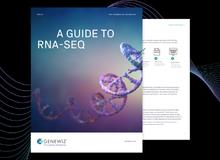
eBook | A Guide to RNA-Seq
RNA sequencing is a powerful tool to help researchers reveal novel biological insights into the transcriptome. This eBook explores the fundamentals of this popular NGS technique, including the complete experimental process, step-by-step bioinformatics analysis, and tips to help you achieve the best results for your RNA-Seq experiment.
-

Blog | How to Improve Your RNA-Seq Data with UMIs and ERCC RNA
Measuring gene expression with RNA-Seq is susceptible to bias and variability. In this blog post, learn how unique molecular identifiers (UMIs) and ERCC RNA spike-ins can help you generate more accurate gene expression data.
-
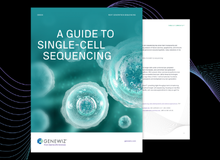
eBook | A Guide to Single-Cell Sequencing
Whether you’re new to single-cell sequencing or looking to improve your data quality, this eBook provides a comprehensive overview of single-cell sequencing, focusing on how this technology works, optimized approaches to enhance results and use-case applications to help you get the most out of your research.
-

Webinar Series | Advancing Transcriptomics: Gene Expression Screening, Single-Cell RNA-Seq, and Beyond
With this two-part webinar series, go beyond traditional transcriptomics and learn about the various NGS approaches available for gene expression analysis. In part 1, we take an in-depth look at various gene expression approaches. In part 2, we explore the data generated from these approaches and how they can complement each other and confirm findings.
-
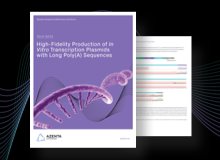
Tech Note | Full-Length RNA-Seq: A Novel Method to Assess Sequence Integrity for RNA Therapeutics
Strict quality control is required to maintain the integrity of manufactured products for RNA therapies, but current assays often present limitations. Learn how the novel full-length RNA-Seq approach preserves the entire length and effectively sequences poly(A) tails of mRNA products.
-
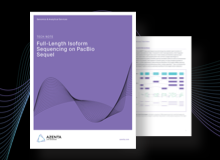
Tech Note | Isoform Sequencing on the PacBio Sequel® – Maximizing Output and Accuracy
Contiguous mRNA full-length sequencing (Iso-Seq) greatly simplifies genome annotation and accelerates discovery of novel RNA isoforms. This Tech Note discusses advantages of the latest technologies combined with optimized workflow to increase output and accuracy.
-
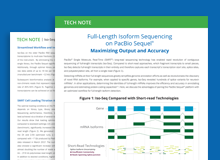
Tech Note | Achieving Phenotypic Profiling for Rapid Drug Discovery with High-Throughput Gene Expression Screening
High-throughput technologies are critical for phenotypic profiling in drug discovery. This tech note discusses challenges with traditional approaches and offers an optimized assay to achieve high-quality phenotypic profiling at reduced cost.
-
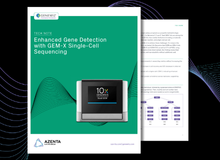
Tech Note | Enhanced Gene Detection with GEM-X Single-Cell Sequencing
This tech note highlights how 10x Genomics’ GEM-X chemistry enhances single-cell RNA sequencing by improving cell recovery, gene detection, and immune profiling, while reducing costs per cell.
NGS Platforms
For information on our NGS platforms as well as recommended configurations of your projects, please visit the NGS Platforms page. GENEWIZ does not guarantee data output or quality for sequencing-only projects.
